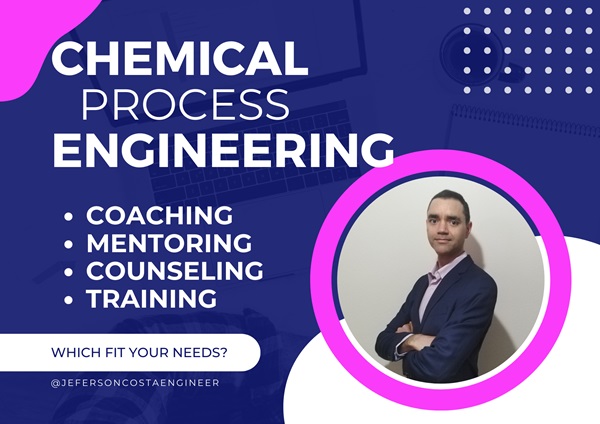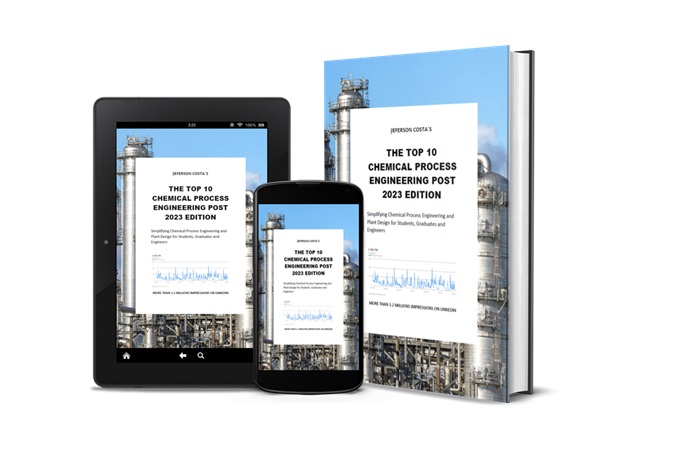Every project rises to solve at least one problem. It can be as big as the installation of a new petrochemical facility and associated utilities, or the installation of a new pump in an existing facility. In any case, chemical process engineers who work with plant design need to be aware not only to solve the problem but also all procedures and documentation required to have that problem solved. In the following lines, I share with you how is to work in plant design.
As you already know plant design is a multidisciplinary task. Although chemical process engineers can lend other hats eventually, as a project or company gets bigger, more specialized people tend to be and discipline interfaces tend to increase. If you did not realize that yet, the following example will help you.
FIRST THINGS FIRST, THE PROBLEM
You just started a new job in a small company. During the interview, you were informed that your roles included taking care of product quality and look for process improvements. The last manager board decided that any improvement in the process should be made by Operation and because of that, the company does not have a project department. As time passed on, problems were accumulating and now, the new CEO decided that the company must have a project engineering point of view to solve problems.
Your boss is a very skilled man, however, he believes that doing project documentation takes a lot of his time. Because of that, he tells you that is your responsibility to take care of this bureaucracy.
After some days your boss tells you that the company plans to install a new purification unit. According to the Supplier, the purification unit needs freshwater at 16 m3/h and 2 barg minimum. The purification unit will be 50m away from the storage tank. Your boss asks you to quote a pump for this service and to consider the use of the 3″ spare nozzle available at the freshwater tank. It is your duty to develop a set of process engineering documents to be sent to the third party Design Office for engineering detailing. Moreover, he wants to know how many people would be involved in this project. He does not trust Design Offices because they ask too much money to do small things. You need to show to your boss which engineering is involved in this scope.
CHEMICAL PROCESS ENGINEERING DELIVERABLES
Before getting into multidisciplinary analysis, I would like to remember you that for this case the main chemical process engineer deliverables are process flow diagram, piping and instrumentation diagram and process datasheet for equipment. It would be useful to have an engineering memorandum to summarize project scope, environment condition and utility consumption. Instrumentation and automation are implicit and must be considered.
HOW BIG IS A PLANT DESIGN TEAM?
Let me alert you that I have no intention to exhaust interfaces, but to give you a broader point of view in plant design. Eventually, I will miss or omit some detail. In those cases, you can add your comments or forgive me 😅
Let’s start with civil engineering. In most cases, the intervention in the physical world starts with civil engineering. The land must be prepared to plant installation, or in this case, for pump installation. Considering that the equipment will be installed in the floor, the civil engineer will design a base for the pump. The multidisciplinary interface includes informing pump dimensions and weight. It is taken from pump supplier drawings or catalogs for preliminary estimation.
Electrical power is needed to run the pump. The electrical engineer needs to know the pump motor size and available tension. In the earlier stages of a project, you can do the calculation to estimate the motor size and also use the supplier catalog. Plant feed tension is local info and could be added to the process engineering memorandum. Other relevant info for Electrical is if the pump will be installed indoors or outdoors as it changes required ingress protection (IP) to the motor. If flammable gases are present in the plant, the electrical engineer must have access to the classified area map.
According to pump complexity, the mechanical engineer is required to do a proper pump mechanical specification. Based on process datasheet for equipment, the mechanical engineer will define pump material, type of sealing, spare parts and so on. I have seen pumps in the air separation industry that has its own P&ID.
Pumps are needed to pump fluid to points of interest. For that reason, the piping engineer is needed. Most of the info that piping engineer needs will be taken from the P&ID. Pump nozzles, line number and spec, pipe size and so on to name a few. The plot plan is also required. If a pipe rack or pipe way is needed and does not exist, piping engineering will interface civil engineering.
Although not mentioned in the problem description, it is very hard to have an industrial plant without analogic or digital Instrumentation. To set pump flow you will need to be able to verify differential pressure across pump inlet and discharge. At least one pressure measurement device is needed. It can be a pressure indicator at pump discharge or a pressure differential indicator between the pump suction and discharge. Moreover, it is important to guarantee the pump NPSH required. For that reason, the tank level needs to be connected to pump operation in some way. Chemical process engineering interface with instrumentation engineer includes providing process datasheet for instrumentation, measurement ranges and design limits (pressure and temperature).
Automation engineering is of extreme importance in the process of getting field info and let that available to the operator in the control room. For this example, let´s consider that operators will be able to know in the control room if the pump is On or Off in the field. Pump start and shutdown interlock with very low tank level is required to prevent pump cavitation. This info will be read by the automation engineer in the P&ID. In any case, if setpoints are not available at the P&ID, process engineer in conjunction with the mechanical engineer will need to fill this info in a different document, for instance, in the Instrumentation list.
These are the main interfaces you will face as a chemical process engineer working with plant design. However, there are others for sure.
To finish this topic I would like to remind you that every project is based on scope, schedule and cost. A project manager will interface with you in order to keep the project on the budge. Be wise to have the project manager at your side issuing your deliverables on time, tracking scope changes and avoiding cost increasing.
—



